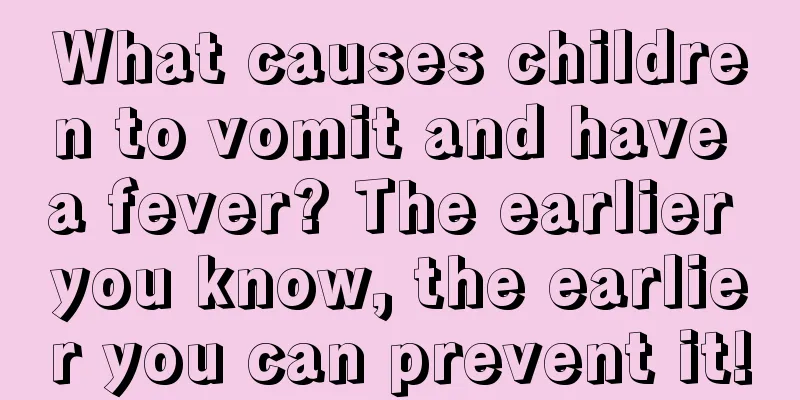What causes colic in children?

|
Pediatric colic is certainly a problem that cannot be ignored, because for children, the impact and harm it produces are relatively large, and it can cause very great pain. Therefore, parents must understand the symptoms of childhood colic, so that they can detect abnormal problems in time, help them cope with and solve them, and reduce the impact and harm of this disease on childhood colic. Intestinal colic, also known as spastic intestinal disease, refers to recurrent long-term chronic abdominal pain caused by functional intestinal spasm. The clinical feature is abdominal pain, but the severity and duration of the pain vary greatly. In mild cases, there is only transient abdominal pain, which can be relieved on its own in a short time; in severe cases, the abdominal pain is very severe, the child will cry constantly, and the pain affects his diet and sleep, which can last for several days. It can occur from infants to prepubertal children. Only those cases that occur frequently and repeatedly over a long period of time are called childhood spastic intestinal syndrome. Those with less frequent attacks are called infantile intestinal spasms. There is a difference between the two. 1. The causes are: 1. Allergic factors: These children have allergic constitutions and may have allergic asthma or rashes; they are also prone to food allergies, causing abdominal pain or diarrhea. 2. Physical factors: cold, overheated or cold food, hunger, drinking or eating too fast, swallowing too much air, or external force hitting the abdomen. 3. Mental factors: Children who are often scolded and beaten by their parents at home and severely criticized by teachers for being naughty in kindergartens and schools are prone to intestinal cramps. Tension, fear, and fright can induce intestinal colic. For example, before an exam, nervousness may induce intestinal spasms and affect the exam performance. 4. A few have a family history. 2. Clinical manifestations: Children often have sudden attacks, with their bodies bent and their hands tightly hugging their abdomens; or they curl up or roll around in bed. Those suffering from severe pain have a sallow complexion, cold sweat, and purple lips; a single spasm attack can last for several minutes or longer. Then it will be relieved, or it will recur after a period of time. After most of the pain is relieved, the patient will pass more foamy stools or pass flatus, and return to normal. When the pain occurs, physical examination reveals tense abdominal muscles, no obvious fixed tenderness points in the abdomen, and sometimes the spasmodic intestine can be felt, like sausages, with hyperactive bowel sounds; the body temperature is usually not elevated; some people report that the eosinophils in blood routine examinations temporarily increase when intestinal spasm occurs, but this has no specific significance. Children are still young, and any problem will be detrimental to their physical health. Therefore, in life, parents must pay attention to observation when taking care of their children. If they find some abnormal conditions in their children, they must pay attention to it and take them to the hospital for examination and treatment in time. |
<<: Introduction to family rehabilitation training methods for children with cerebral palsy
>>: How to develop children's memory
Recommend
What causes infantile dermatitis?
The skin of a newborn is generally more fragile t...
What are the early symptoms of hypothyroidism in infants?
Babies' physical fitness is not like that of ...
What to eat for children with allergies
People with allergies are a special group of peop...
Can children drink monk fruit water?
In traditional Chinese medicine, monk fruit is a ...
What should I do if my 1-year-old baby suddenly has a fever?
Some babies' bodies are very fragile. Once a ...
What is the cause of the baby's heart noise?
If a child has this kind of heart noise, it may c...
Hearing delay in premature infants
Since premature babies are born before full term,...
The back of the baby's hand was swollen due to mosquito bites
Because babies are in a rapid development stage, ...
What should I do if my child has a cough and a runny nose?
Children’s health is what parents are most concer...
The child's head sweats a lot when sleeping
There are two main reasons why children sweat a l...
At what age should children be weaned?
During infancy, children's main food is the m...
Why does my baby always grind his teeth when sleeping at night?
Generally speaking, people of any age may grind t...
Causes of redness and swelling after children receive DPT vaccination
In fact, many parents know that vaccination is an...
The difference between growing pains and pathological pain
When children are growing up, they often tell the...
What are some recipes for children to strengthen their spleen and stimulate their appetite?
Today's children's eating habits require ...









